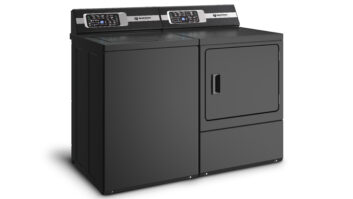NEW YORK — While Whirlpool is pleased with the growth and margin opportunities within its core appliance business, the company is also focused on developing adjunct products to generate new revenue streams.
Chairman/CEO Jeff Fettig told analysts at the Bank of America Merrill Lynch 2013 Consumer & Retail Conference here last month that the manufacturer is looking beyond its mainstay washers and microwaves to other “products or services that are dependent or related to our core business. The more real estate that I own in the home in my core products, the more opportunities to add on revenues.”
Examples of adjunct categories that Whirlpool has developed or mined include water filters for refrigerators (“We sold tens of millions of them,” he said), and storage pedestals for laundry pairs. Fettig also cited the company’s KitchenAid small appliance business, which is an outcrop of the brand’s major appliance line.
The alternative categories currently comprise 22 percent of sales, and Whirlpool believes it can grow the segment at twice the rate of its core, or “T-12” major appliance business. “This helps both increase our growth rates on a long-term basis but also makes up our margin, which is very important,” Fettig said.
Turning to the macro-environment, the chief executive also noted that new home construction is “coming back, it’s real and it’s going to be a positive driver.” Existing home sales are also rebounding, and bringing a 1 percent demand increase in appliances for every 6 percent increase in existing home sales.
“The part that’s still uncertain is just pure discretionary remodeling or replacing before wear-out,” he said, which represents upward of 20 percent of the market. “That’s more consumer confidence- related. We think it will come back … in the next three to five years.”
In the meantime, Whirlpool has managed to rebuild appliance margins without demand recovery and despite 20-year-old volume levels by restructuring the business, driving productivity, investing in new products, and taking price increases where appropriate, he said.













